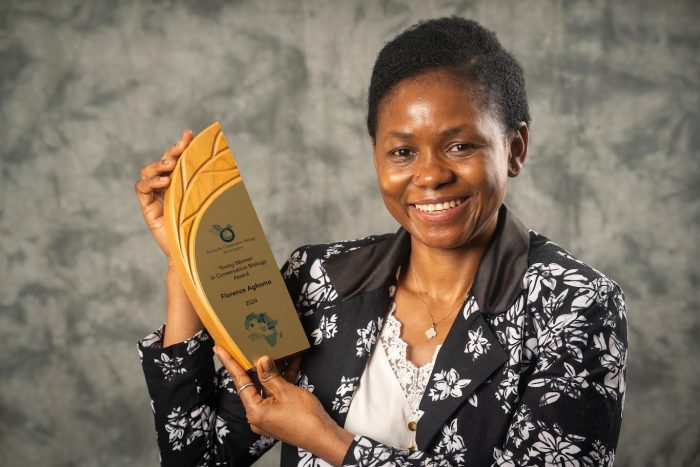By Steven Zaitz
If you have not been to the Long Island Music and Entertainment Hall of Fame in Stony Brook Village, you might not know just how many musical giants are from around here.
Billy Joel, Mariah Carey, Eddie Money, Twisted Sister and the Stray Cats are just a few of the household names who grew up on Long Island, and made it big in the industry. They are now inductees in the hallowed halls of the LIMEHOF, which just this month celebrated its 20th anniversary.
Another musical giant, who is not on this list and will probably never sell out Madison Square Garden or make a platinum record, is Ernie Canadeo. Canadeo has been the Chairman of LIMEHOF for 10 years, and was the driving force behind transforming it from a rolling exhibit in a Winnebago, to the state-of-the-art 8,800-square-foot facility it is today.
Canadeo, who grew up in Westbury and now lives in Glen Cove, is the founder and Chairman of EGC Group, one of the largest advertising and digital marketing firms on Long Island. Last month, Canadeo was inducted into the Long Island Business Hall of Fame for not only his work at EGC, but also his membership on the board of directors for many Long Island non-profit organizations. Additionally, he is on the Executive Committee of the Long Island Association, which is the foremost business and commerce organization on the Island.
Canadeo has also spearheaded and supported many philanthropic endeavors, such as TeachRock, which promotes music in the classroom, and the National Stuttering Association.
Despite these achievements in the hyper-competitive digital marketing industry, Ernie is renowned for maintaining a sweet touch and sense of family with everyone in his orbit — business associates and loved ones alike.
“Ernie is huge on family,” said his wife Catherine Canadeo, who is the CEO of her own Corporate Wellness Advisory firm. “Everything he does focuses on that zest, that love of life, of food and friends and family, and of course, music.”
His experience in the music industry began in the 1970s when he worked as an advertising exec and promoter at RCA, A&M and Arista Records. Ernie promoted acts such as Hall & Oates, The Police, Diana Ross, The Kinks and R.E.M during the punk, glam and early disco eras of the ‘70s and ‘80s, until he founded the EGC Group in 1985. After landing some big accounts like Blockbuster Video and Häagen-Dazs ice cream, EGC established itself as a major national player in the advertising world, despite not having an office overlooking Madison Avenue.
“LIMEHOF was founded primarily by musicians and educators,” said Canadeo, who is a Stony Brook and Fordham University alum. “But in 2006, they asked me to be on the board because there wasn’t really a business person on it. I was happy to lend my expertise, and a few years later, I was named chairman.”
Fellow board member and LIMEHOF founding father Jim Faith recalled the early days of Ernie’s tenure. “Money was always a problem for us in the beginning, and with Ernie’s vision, we have been able to take a huge leap,” said Faith. “He’s a great businessman who also happens to be a great lover of music. Getting that deal for the Stony Brook building was so important to us and has enabled us to do so many other things.”
One of Canadeo’s first orders of business as chairman was to establish a permanent home for LIMEHOF. “We tried over the years to have a real hall of fame, and a great mobile museum, but what we really wanted was a home,” Canadeo said. “In 2022, I got a call from Gloria Rocchio, a real estate broker in Stony Brook, who asked me if we were still looking. So I went up there and fell in love with the place, but told her we could never afford this. She said, ‘Yes, you can,’” he continued.
For 85 years, the Ward Melville Heritage Organization has preserved historic properties donated by Ward Melville, to support non-profits that promote culture and education through history, art and music. And this just so happens to be LIMEHOF’s exact mission.
Canadeo ends the story with this wonderful fact: “We signed a 25-year lease for a grand total of one dollar a year and moved in a few months later.”
Since taking over the facility on the northeast corner of Stony Brook Village, LIMEHOF has showcased a fascinating collection of artifacts, from concert-used instruments and outfits to memorabilia spanning decades — from Broadway legend George M. Cohan to doo-wop icons like Little Anthony and the Imperials, and even rap megastars Run-D.M.C. The space was conceptualized by famed artist and designer Kevin O’Callaghan, and there is a steady stream of homegrown music emanating from the concert area every weekend of the year. This past Thanksgiving weekend, the organization celebrated its anniversary with two days filled with live performances from over a dozen bands — all with Long Island ties.
Across the hall, an entire wing of the museum houses the “Billy Joel – My Life, A Piano Man’s Journey” exhibit, which is filled with over 50 years’ worth of memorabilia — much of which came from the Piano Man’s personal collection. The exhibit opened to the public in November of 2023 and has been seen by more than 10,000 people.
LIMEHOF founder and board member Norm Presslin, a Stony Brook University professor of media, who has also been in radio for close to half a century, first got to know Ernie decades ago when the ad man guest spoke in the professor’s classroom, discussing the topics of music marketing and business. Presslin was impressed with Ernie’s ability to communicate, with warmth, the vagaries of challenging industries.
“I’ve observed many people in the advertising and marketing world, and many of them never adjusted to the rapid changes,” said Presslin. “Ernie’s ability to adapt has served him well and has served LIMEHOF well. Essentially, what he has done is create a home for Long Island musicians and people who love music that they never had before.”
While Ernie holds the title of chairman at his namesake EGC agency, his current CEO, Nicole Penn, handles much of the day-to-day operations. She has worked with Ernie for 20 years and has ridden shotgun with him as the industry transformed from traditional newspaper and television ad campaigns to the current digital-heavy, social media-driven model it is today.
“In the 21st century, no other industry has changed as much as ours,” Penn said. “Ernie has always been a great sounding board and mentor. He’s caring, but also astute and has a great lens at looking at a problem from different angles. If it’s a client challenge we are trying to solve, he always seems to have relevant experience and the right instincts. What he has done at LIMEHOF is a by-product of this and it is so great because music has always been his passion,” she added.
Music and passion. For someone who loves to cook Italian food as much as Ernie does, these two ingredients are like the white wine and garlic in his famous Chicken Scarpariello. So much so that when it came to professing his love for Catherine on their wedding day five years ago, Ernie sang an original composition called ‘10,000 Kisses,’ just for the occasion. He performed it in front of 100 guests at their home. On keyboards was pianist Christopher Clark of the band Brand X, and on sax was Lords of 52nd Street saxophonist Richie Cannata, who played with Billy Joel for decades.
“To see him with that microphone, I was completely blown away,” Catherine said. “We have parties here at our house, and sometimes we have musicians come over, but I had no idea that Ernie was actually going to sing. When he did that, my heart was so full, so overwhelmed with admiration and fondness for his sweetness.”
“To do that in front of all of our friends, singing just to me — he was singing to my heart, and that showed his love on so many different levels,” she continued.
Ernie and Richie have been friends for many years, and it was Cannata’s then-girlfriend who introduced them. “Ernie and Cathy are a match made in music heaven, and I couldn’t be happier for both of them,” said Cannata, who was inducted into the LIMEHOF in 2014. “I’ve known Cathy for a long time, and it’s a beautiful thing for all of us — way bigger than words.”
That night, as a party favor, Ernie handed out a CD OF ‘10,000 Kisses’ to all of his guests — a fitting metaphor for all Ernie has given to Long Island, the local music community and everyone who has had the pleasure of meeting him.




















